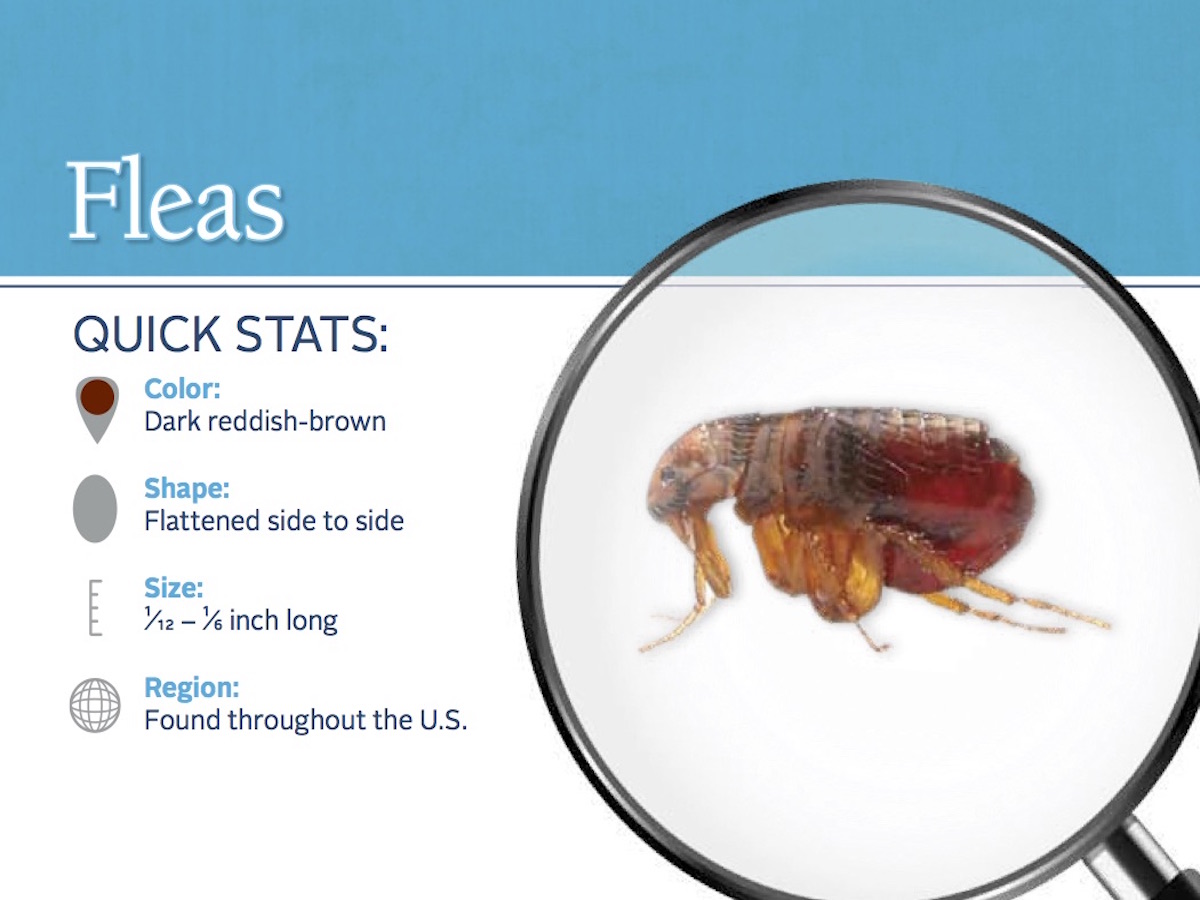What to do if you suspect a flea infestation in your home:
Due to the life cycle of fleas, they are not easily controlled by over the counter products. Instead of reaching for flea bombs and foggers, whenever possible, the best way to get rid of a flea infestation is by persistent vacuuming, treatment with a long-acting insecticide, and prevention. Pets with known flea problems should be treated and maintained with a veterinarian-approved flea control product. Meanwhile, areas where pets rest should be either vacuumed or laundered. Areas to pay special attention to typically include:
- Human and pet bedding—launder and dry on hottest allowable setting
- Floors, area rugs, and furniture—vacuum daily, paying special attention to areas where pets rest
- Dog houses, pet-perches, and under Fido’s favorite tree—these locations harbor flea eggs, which make it critical to keep your pets’ flea control maintained
When to call in a professional:
Over the counter products for fleas are regulated to be safe for the consumer to apply it, and based on the assumption that the average consumer might not always follow the label exactly as it is written. For this reason, and others, OTC treatment products typically have a limited life. When all efforts to vacuum and launder to break the reproductive cycle have failed, it is recommended that liquid or aerosol flea treatments be performed by a licensed pest control professional.
What happens during a professional flea treatment?
Prior to your flea treatment, we will arm you with a list of items to perform. These typically include details regarding laundering, vacuuming, preparing rooms and having your pets cared for.
During the treatment, we will excuse you and your pets from the home for a period of a few hours. For maximum efficacy, a residual flea control product of choice will be used. The active ingredient(s) have two long-acting components to help to control fleas and break the reproductive life cycle.
These components include:
1. Adulticide - Designed to kill adult fleas and developing fleas (larval stage) on contact.
2. Insect Growth Regulator‐ Only affects developing fleas. Any larval stages of fleas that come into contact with the growth regulator will be unable to develop into an adult, thereby interrupting the reproductive life cycle.
What to expect after treatment?
Professional flea treatments generally result in an immediate reduction in the number of adult fleas in the home. It is common, however, to see more fleas within 7 to 14 days following the treatment. These fleas were in a pre-adult or “pupal” stage of development at the time of the initial treatment and have not yet come into direct contact with the adulticide used to control them. They should die within a few hours of coming into contact with the residual insecticide.
Daily vacuuming post‐treatment will also help to eliminate individual fleas that emerge following the initial treatment. For further questions or information, please contact us.
